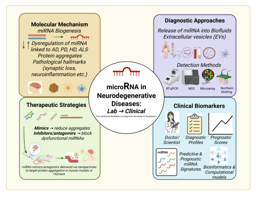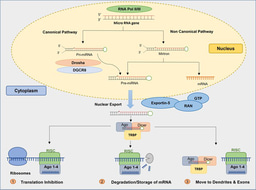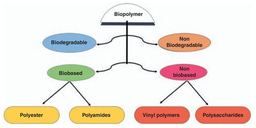Applications of novel nanomaterials in water treatment
Published in Chemistry

Explore the Research
 elsevier.com
elsevier.com
Just a moment...
Skip to main content
Introduction
Water scarcity and contamination are two of the most pressing issues facing humanity today. With a growing global population and industrial advancements, the demand for clean and safe drinking water has reached a critical point. Traditional water treatment methods are struggling to meet the increasing challenges posed by pollutants, contaminants, and pathogens. In this context, nanotechnology has emerged as a groundbreaking solution, with nanomaterials offering revolutionary potential for improving water treatment processes. In this chapter, Nanomaterials for Bioreactors and Bioprocessing Applications, we explore how novel nanomaterials are being utilized in water treatment, focusing on their efficiency in removing toxic substances, pathogens, and emerging pollutants.
The Role of Nanomaterials in Water Treatment
Nanomaterials, typically defined as materials with sizes ranging from 1 to 100 nanometers, possess unique physical, chemical, and structural properties that make them ideal for a wide range of applications, particularly in water treatment. Their high surface area, reactivity, and ability to interact with contaminants at the molecular level make them highly effective in addressing various water purification challenges.
Nanomaterials have proven particularly useful in removing a wide array of contaminants, including heavy metals like arsenic, lead, and chromium, as well as harmful organic pollutants such as pesticides, textile dyes, and pharmaceuticals. Recent studies have also highlighted their effectiveness in dealing with emerging contaminants like perfluorooctanoic acid (PFOA) and perfluorooctane sulfonate (PFOS), which are resistant to traditional water treatment methods.
One of the key advantages of nanomaterials is their ability to target specific pollutants. For example, silver and gold nanoparticles have shown significant promise in removing harmful heavy metals from water, while carbon nanotubes and nanostructured membranes are being developed to filter out fine particles and organic contaminants. Additionally, magnetic nanoparticles are being explored for their ability to separate contaminants from water through magnetic separation, a highly efficient process that can be used for both desalination and general water purification.
The Benefits and Challenges of Nanomaterial-based Water Treatment
The advantages of nanomaterials in water treatment are numerous. Their high surface area allows for the adsorption of large amounts of contaminants, which improves the efficiency of filtration systems. Moreover, their unique properties enable them to break down pollutants at the molecular level, reducing the need for harmful chemicals in the purification process. Nanomaterials can also be designed for specific tasks, such as photocatalytic degradation, where they break down organic pollutants under light exposure.
However, despite their promising potential, there are challenges associated with scaling up the use of nanomaterials in water treatment. One of the main concerns is their cost. While nanomaterials are highly effective, their synthesis and implementation in large-scale treatment plants can be expensive. Moreover, there are concerns regarding the environmental impact and safety of nanomaterials. The long-term effects of nanoparticles on human health and ecosystems are still under investigation, and it is essential to ensure that the benefits outweigh any potential risks.
Innovative Nanomaterial-based Solutions for Water Treatment
As research continues, innovative nanomaterial-based solutions are being developed to address the global water crisis. For instance, nanomembranes are being optimized for desalination processes, allowing for more efficient removal of salt and other contaminants from seawater. Similarly, bioactive nanostructures, including catalytic vesicles and nanocrystals, are being integrated into water filtration systems to remove both chemical and biological contaminants.
Another exciting area of development is the use of nanomaterials for water sensors. These sensors can detect the presence of specific pollutants in real-time, enabling faster response times and more efficient water treatment. With the growing demand for smart water systems, these sensors could revolutionize how we monitor and manage water quality.
Conclusion
Nanomaterials represent a promising frontier in the battle against water contamination and scarcity. With their ability to remove a wide range of contaminants, improve filtration efficiency, and reduce the environmental impact of water treatment processes, nanomaterials are poised to play a central role in ensuring access to clean water for generations to come. However, challenges related to cost, scalability, and safety must be addressed before these technologies can be widely adopted. By continuing to innovate and improve the efficiency and affordability of nanomaterial-based solutions, scientists and engineers can help bridge the gap between water demand and supply, ultimately contributing to a more sustainable future.
What’s Next?
The path from conceptualizing nanomaterial-based water treatment solutions to implementing them at scale is complex, but the potential impact on global water quality is too significant to ignore. I invite you to explore how these innovative materials could transform the future of water purification and accessibility.
What do you think? Do you see nanomaterials playing a critical role in addressing the growing global water crisis? What challenges do you think we need to overcome to ensure their safe, effective, and widespread use?
Let’s keep the conversation going—together, we can drive the future of clean water for all.
Link to full chapter: https://doi.org/10.1016/B978-0-323-91782-7.00002-3
Keywords: Nanomaterials, Water Treatment, Nanotechnology, Water Filtration, Desalination, Contaminant Removal, Nanomembranes, Magnetic Nanoparticles, Water Purification





Please sign in or register for FREE
If you are a registered user on Research Communities by Springer Nature, please sign in
Excited to share this chapter on the potential of nanomaterials in revolutionizing water treatment! We hope our insights contribute to the development of more efficient and sustainable solutions for global water challenges. Looking forward to your feedback and discussions! https://doi.org/10.1016/B978-0-323-91782-7.00002-3